Traditional Chinese Hanfu embodies the rich cultural heritage and timeless elegance of China. In this article, we will delve into the world of traditional Chinese Hanfu, exploring its historical significance, intricate craftsmanship, regional diversity, cultural symbolism, revival in modern times, and its impact on contemporary fashion. Join us as we unravel the beauty and grace of traditional Chinese Hanfu, a true testament to China’s sartorial legacy.
I. Historical Significance: A Glimpse into the Past
1.1 An Ancient Fashion Tradition
Traditional Chinese Hanfu originated from ancient China and has a history spanning thousands of years. It reflects the cultural, social, and political changes throughout different dynasties, symbolizing the identity and traditions of the Chinese people. Hanfu serves as a tangible link to the past, allowing us to explore and appreciate the history and heritage of ancient China.
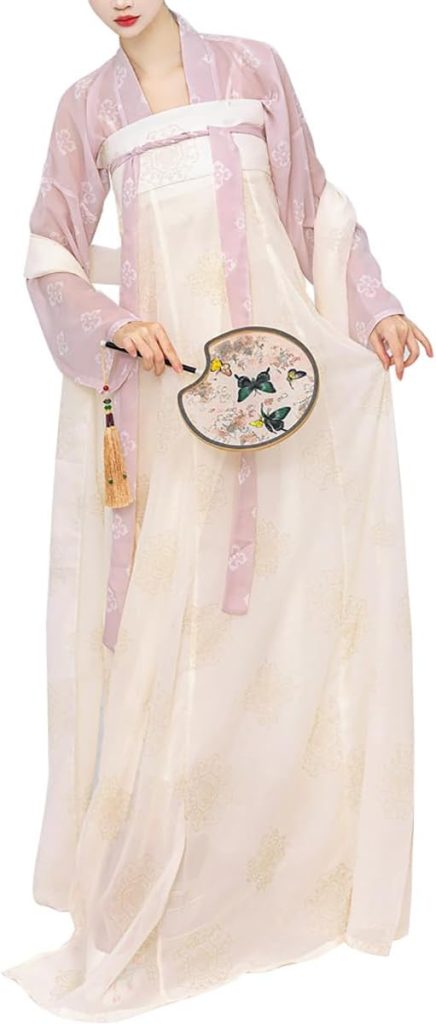
1.2 Representative of Social Hierarchy and Identity
Hanfu served as an indicator of social status and identity in ancient China. Different styles and designs were reserved for specific classes, professions, and occasions. The varying features of Hanfu, such as color, fabric, and ornamentation, provided insight into the wearer’s status, age, marital status, and even their role within society. The intricate details of Hanfu showcased not only the personal taste but also the cultural and social values of the era.
II. Intricate Craftsmanship: The Artistry of Traditional Chinese Hanfu
2.1 Meticulous Embroidery and Needlework
Traditional Chinese Hanfu showcases unparalleled craftsmanship, with embroidered patterns and intricate details that reflect centuries-old traditional techniques. Skilled artisans meticulously handcraft the embroidery, using silk threads and exquisite needlework to bring the designs to life. The artistry and precision involved in the creation of Hanfu make each garment a masterpiece, deserving of admiration and reverence.
2.2 Luxurious Fabrics and Tailoring
Hanfu is renowned for its choice of luxurious fabrics, such as silk, brocade, and damask. These fabrics are carefully selected for their luster, drape, and comfort. The tailoring techniques used in Hanfu create flowing lines, elegant drapery, and flattering silhouettes that enhance the wearer’s natural beauty. Every stitch and fold in the fabric symbolizes the dedication and skill of the artisans who painstakingly bring Hanfu to life.
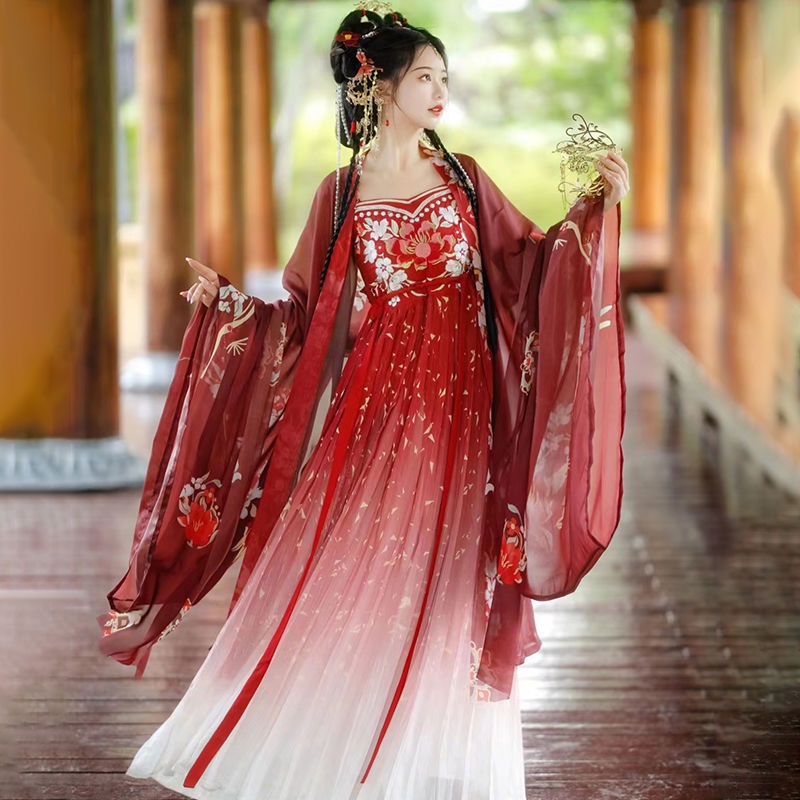
III. Regional Diversity and Style: A Tapestry of Cultural Variation
3.1 Different Styles Across Dynasties
Hanfu encompasses a wide range of regional styles and variations, with unique characteristics that reflect the customs, climate, and aesthetic preferences of different regions in China. From the flowing lines of the Han Dynasty’s Daopao to the voluminous sleeves of the Tang Dynasty’s Ruqun, each regional style of Hanfu offers a distinct visual identity and cultural representation, making it a fascinating aspect of China’s sartorial heritage.
3.2 Influence of Cultural Exchange
The regional styles of Hanfu have been influenced by cultural exchange and interactions with neighboring countries. Trade routes and diplomatic relations introduced new materials, techniques, and design elements, enriching the diversity of Hanfu. The evolution of Hanfu reflects the dynamic interplay between Chinese tradition and global influences, creating a unique fusion of cultural aesthetics.
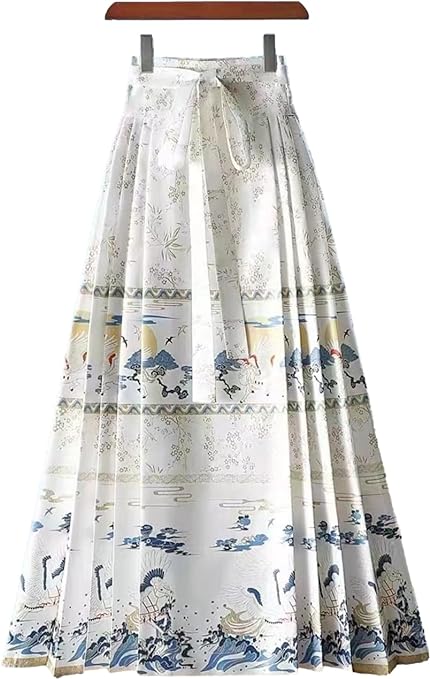
IV. Cultural Symbolism: The Hidden Messages of Hanfu
4.1 Symbols and Motifs
In addition,Hanfu garments are adorned with intricate symbols and motifs, each carrying its own meaning and significance. These designs are meticulously woven into the fabric, creating a visual tapestry that tells stories of virtues, blessings, and aspirations.
One of the most iconic symbols found in Hanfu is the dragon, which symbolizes power, strength, and good fortune. Dragons are often depicted with intricate scales, fierce expressions, and majestic poses, reflecting the divine and authoritative nature associated with this mythical creature. The presence of dragons on Hanfu serves as a representation of prosperity and auspiciousness.
Another prominent motif found in Hanfu is the peony, which symbolizes wealth, beauty, and prosperity. Known as the “king of flowers,” the peony holds a special place in Chinese culture, representing elegance and feminine charm. The intricate petals and vibrant colors of the peony are often depicted in embroidery or printed patterns on Hanfu, adding a touch of grace and abundance to the garment.
Other common symbols and motifs found in Hanfu include auspicious clouds, symbolizing good fortune and luck, as well as the phoenix, representing harmony, rebirth, and the feminine archetype. Lotus blossom motifs are often used to symbolize purity and enlightenment, while the plum blossom represents resilience and perseverance in the face of adversity.
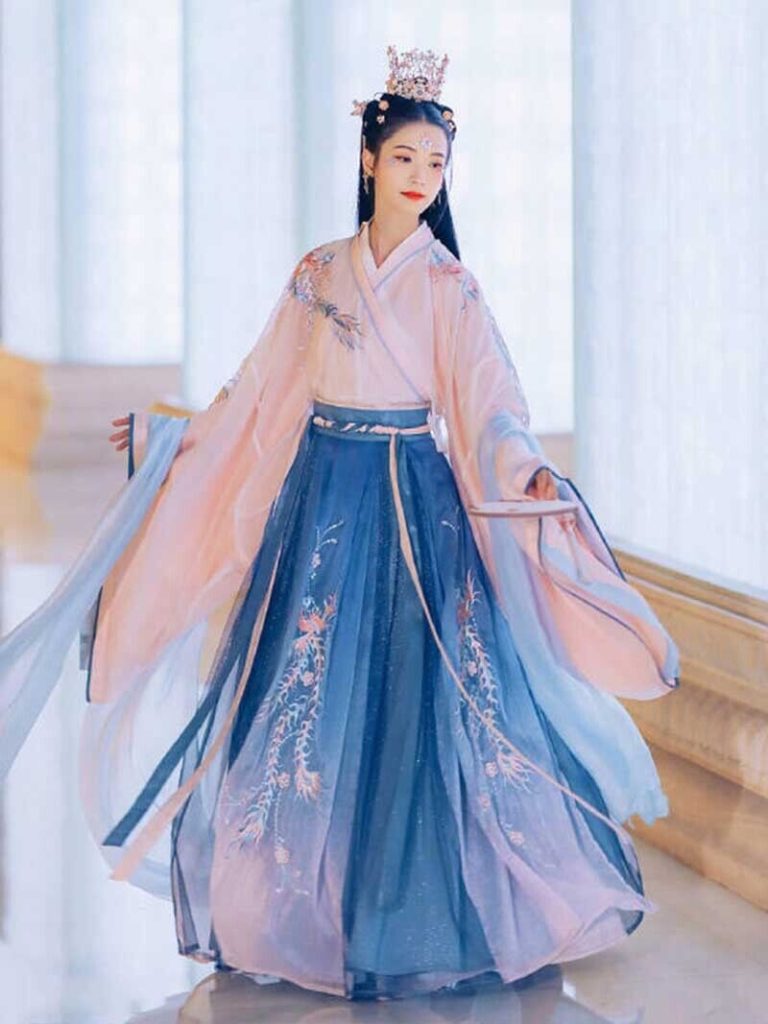
4.2 Colors and Meanings
Therefore, Colors also hold great symbolism in Hanfu. Traditional Hanfu features a color palette that represents social hierarchy, rituals, and seasons. For example, yellow, reserved for the emperor, symbolizes supreme power and authority, while red embodies good fortune and joy. The careful selection and combination of colors reflect a deep understanding of the cultural and symbolic significance associated with each hue.
V. Modern Revival: Preserving and Adapting Hanfu in Modern Times
5.1 Cultural Preservation and Revival
Furthermore, In recent years, there has been a resurgence of interest in traditional Chinese Hanfu, driven by a desire to preserve and revive Chinese cultural heritage. Enthusiasts and artisans are dedicated to preserving traditional craftsmanship, ensuring the continued existence of traditional Hanfu. The revival of Hanfu has extended beyond a mere fashion trend, becoming a movement to promote cultural preservation and appreciation.
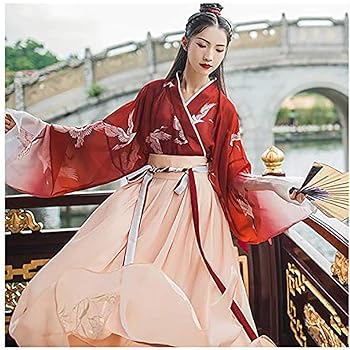
5.2 Combining Tradition with Modern Style
The modern revival of Hanfu has also extended to the adaptation and incorporation of traditional elements into contemporary fashion. Designers have reimagined and modernized Hanfu, incorporating new silhouettes, fabrics, and design details. Embracing and appreciating by a wider audience, the fusion of tradition and modernity allows Hanfu to ensure its continued relevance and influence in the ever-changing world of fashion.
VI. Contemporary Influence: The Legacy of Hanfu in Modern Fashion
6.1 Influence in Haute Couture and Runways
Moreover, The influence of traditional Chinese Hanfu is evident in the world of haute couture and high fashion. Designers incorporate elements of Hanfu into their collections, infusing their designs with the grace, elegance, and cultural richness of traditional Chinese fashion. Runway shows and fashion events have featured the beauty and artistry of Hanfu, showcasing its enduring legacy.
6.2 Influence in Everyday Fashion
Moreover, Hanfu’s influence extends beyond the realms of haute couture, impacting everyday fashion as well. Its aesthetic has inspired modern designs, influencing clothing choices, and shaping trends. Elements of Hanfu can be seen in streetwear, casual wear, and even wedding dresses, highlighting its timeless appeal and the influence it holds over contemporary fashion.
In conclusion, traditional Chinese Hanfu represents a unique and captivating aspect of China’s sartorial heritage. Its intricate craftsmanship, regional diversity, cultural symbolism, and timeless elegance continue to fascinate and inspire individuals around the world. Finally, The modern revival and adaptation of Hanfu have ensured its continued relevance, allowing future generations to appreciate and embrace this treasured cultural legacy.
